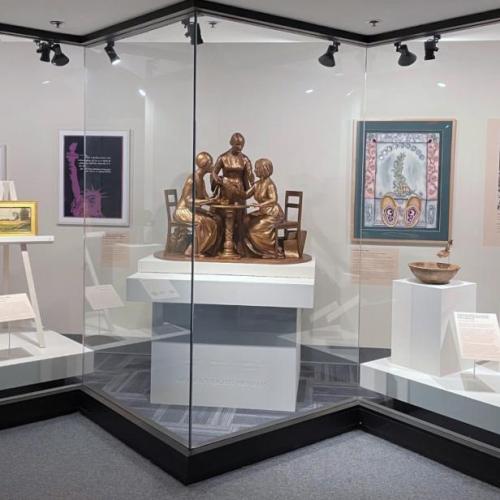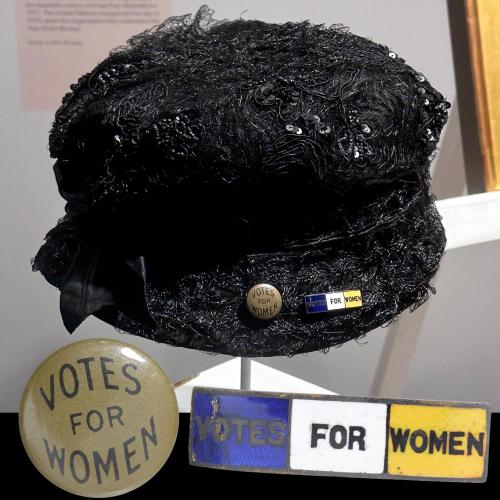1. Dress Reform Gender Norms, and Sexuality in the Suffrage Movement
Artifacts:
Women’s Rights Pioneers Monument 1/3 Model and Women’s Suffrage Buttons
Where to find them:
From the Collections: Women Who Lead exhibition in New York Metropolis Hall


The fight for women’s rights was not just about the vote. Nineteenth-century reformers like Sojourner Truth, Elizabeth Cady Stanton, and Susan B. Anthony were concerned with a broad swath of issues that negatively impacted women’s lives, including lack of access to education and to the professions, lack of ability to serve on juries, and the restraining qualities of popular women’s fashion (heavy, floor-length skirts and constricting corsets that limited women’s ability to participate in many activities). In the 1850s, many reformers, including Stanton and Anthony, began wearing what would become known as “the Bloomer costume,” a relatively shorter skirt with loose pants underneath. For some, this change was short-lived, as the mocking and criticism they received in public took attention away from the ideas they wanted to express about women’s rights.


